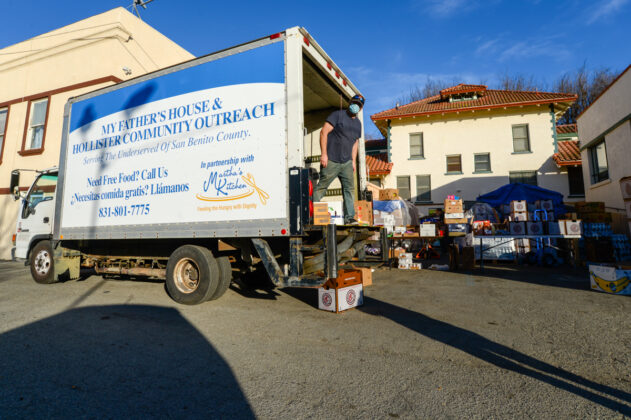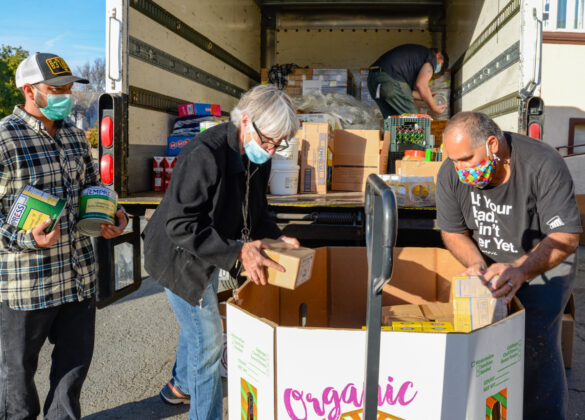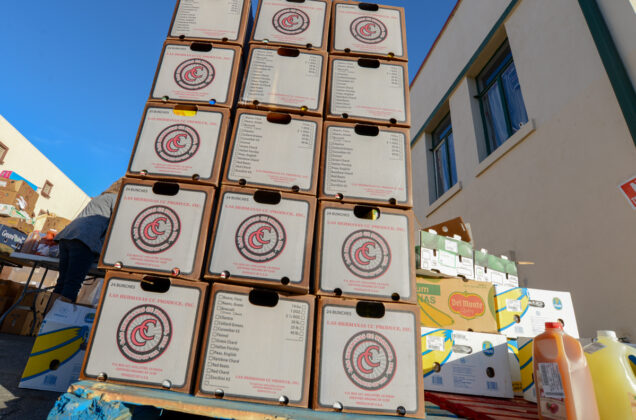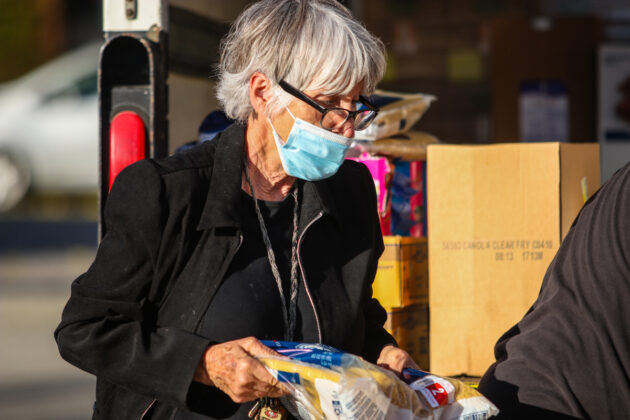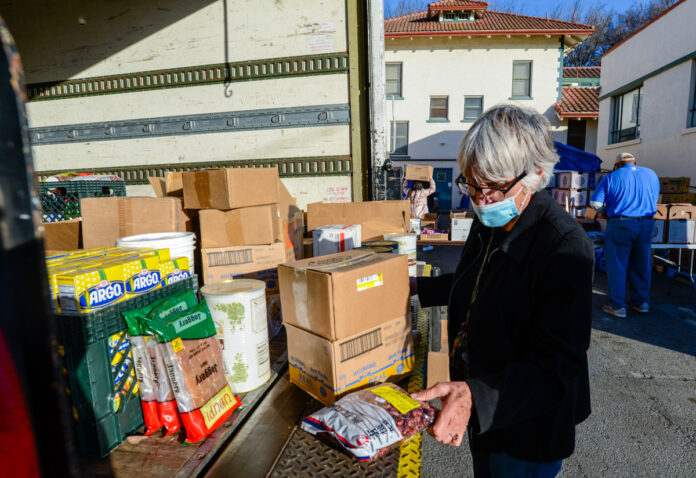
The Hollister Community Outreach organization has been providing meals and groceries to hundreds of people who are underserved in San Benito County, a safe haven for those in need.
Founder Linda Lampe spends countless hours throughout the day collecting as much food as possible and distributing it that very same day. She’s aware that people are struggling more than ever when it comes to putting a meal on the table.
The 73-year-old Tennessee native believes there isn’t a food shortage in the United States and San Benito County, but instead it’s a distribution problem.
“We get that solved then we can make sure that our society as a whole is well nourished, well fed and is not food deprived,” Lampe said.
Lampe, who also manages My Father’s House and the Worth Saving Thrift Store, has reached out to the City of Salinas and other areas whenever she receives an abundance of food. There have been instances when she tells grocery store employees to let her know if they think anyone is struggling to put food on the table.
“I want to get to the point where the people aren’t excited about it and I know that sounds crazy,” she said. “I want to get to the point where these people are so well nourished, so well fed, that it’s expected to be normal and not abnormal.”
The USDA measures food insecurity as a lack of access to enough food for an active, healthy life for all household members and limited or uncertain availability of nutritionally adequate foods. Sometimes it also means families have to put off housing or medical bills to buy food to put on the table.
Sarah Nordwick, community engagement and development director at Community FoodBank, responded in an email that they’re seeing a large increase in first-time customers since the pandemic started.
“The stereotypical person one would suspect uses the food bank is in fact not true,” she said. “It is the families with young children or the man who lived a nice life until he lost his job and needs help to get back on his feet. Each person who comes to the Food Bank will continue to be treated with dignity through service.”
Nordwick said they’ve been very fortunate to have plenty of food to serve the rising number of people who are in need. They started new Pop Up Marketplace distributions to offer additional opportunities to receive food.
She mentioned that if they happen to hit a roadblock with obtaining food, they’ll do everything they can to change paths and find additional food sources.
“We have great partnerships with local farms, other food banks and stores that help supplement the food we give to customers,” she said. “We have been around for 30 years and we plan to continue to serve our neighbors of San Benito County.”
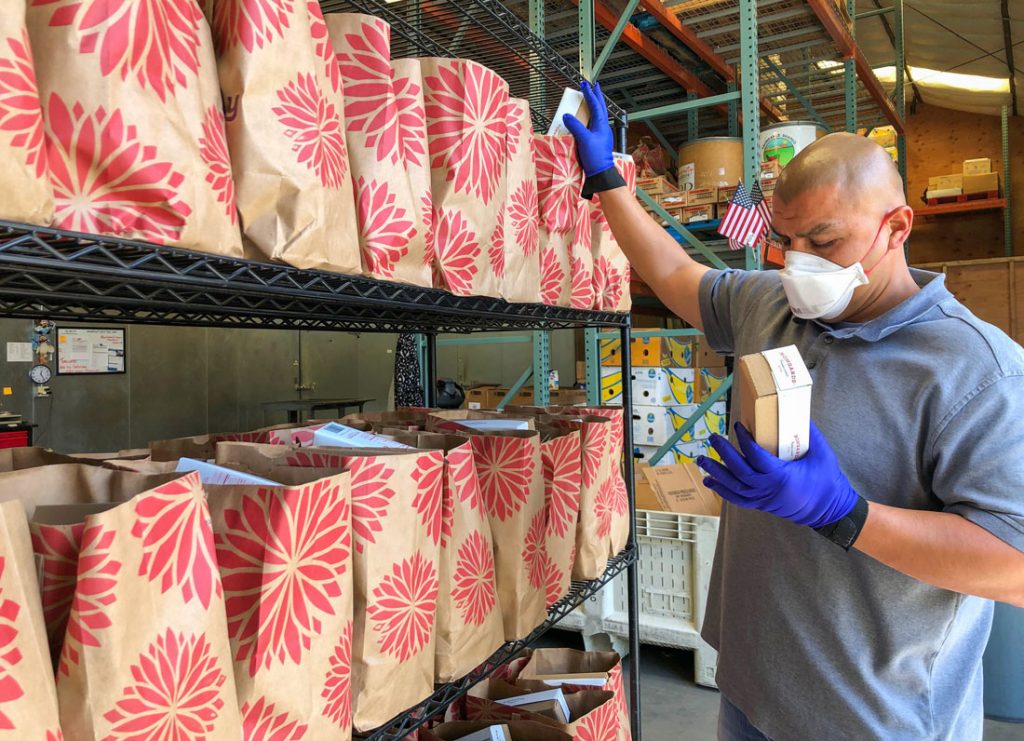
John Healey, chairman and CEO at California Emergency Foodlink (CEFL), wrote a letter to Congressman Jimmy Panetta stating that he’s concerned with changes to the administration of The Emergency Food Assistance Program.
“In short, these changes could leave food banks in your district without the quantity or quality of food they need to serve families, who are likely to face continued hardships due to the Covid-19 pandemic,” said Healey in the letter.
CEFL has delivered emergency food to households in need and has been one the most successful non-profit food distribution agencies in the nation, according to Healey. He added that they’ve helped to ensure that food is on the table for more than 400,000 families each year.
Healey also mentioned that the California Department of Social Services awarded a new company a no-bid contract to provide and operate California’s TEFAP program. The transition took place on Jan. 1.
“The Department’s reported decision is marked by numerous irregularities that are wholly inconsistent with California public contracting requirements,” he said. “Furthermore, we have serious concerns that this decision will lead to a shortage of food just as families are grappling with the economic fallout of a third wave of Covid-19 cases.”
Healey said that a new distribution partner was brought in during the fall in Lassen and Modoc counties but the food banks haven’t received TEFAP food since Oct. 1. He’s concerned that a similar situation can occur at the Community FoodBank of San Benito, Food Bank for Monterey County and Second Harvest Food Bank in Santa Cruz County.
From January to October, the average age of those in San Benito County that were receiving SSI in new CalFresh processed applications was 43 years old, which is far below the statewide average age of 52.
But, the numbers within those 10 months fluctuated like a roller coaster beginning with the average age of 52 in January.
That was followed by 44 in February, 47 in March and 48 in April. But, there was a big drop in May, which saw an average age of 33 years old with 57 percent of those being under the age of 18.
The average age jumped back up to 56 in June and 42 in July, but then it dropped to 34 in August. It shot back up to 50 in September, however, the average age fell down to its lowest point at 30 years old in October.
In those same 10 months, Santa Cruz County has seen an average age of 52 years old and it usually ranges from 50-60 years old.
In 2018, Feeding America released data that showed there were 4,480 people in San Benito County who reported food insecurity. The chart shows the local cost of the meal at $7.10 and the annual food budget shortfall shows $3.3 million, which is how much more money people struggling with hunger report needing to buy enough food for their families.
Lampe noted that their mission statement has always been to serve the underserved in the community because hunger can take on any form. But nowadays she believes the community needs to become more vigilant and take note of the changes going on in the area.
There used to be a way to identify people who have food insecurity, including those who are chronically food deprived and those who are brand new. But she wants to remove those barriers and remove the social stigma.
“It should not be that way at all but unfortunately it is and it’s nothing new that people have that social stigma that it’s shameful if you can’t put food on the table,” she said. “We’re going to serve no matter what age, what ethnicity, what income bracket because a lot of this is so new to people.”


